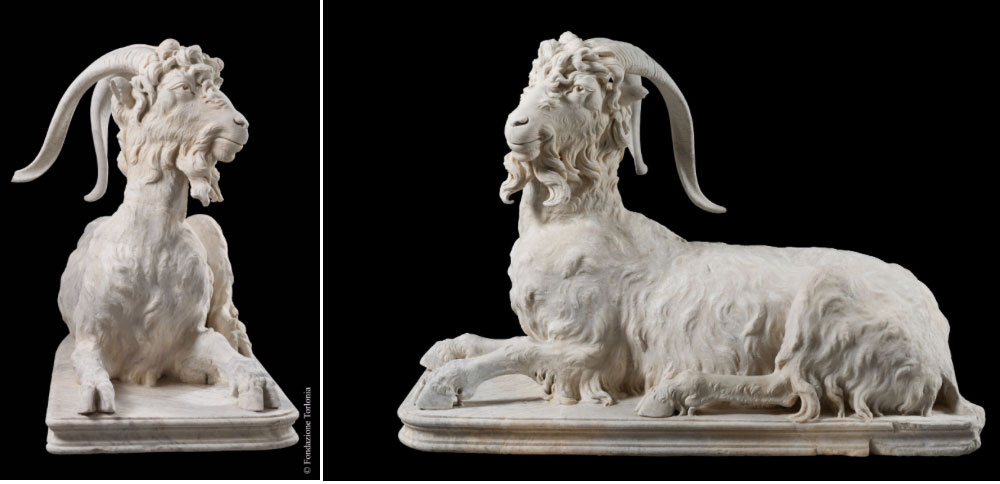
Statue of a Resting Goat, once part of the Giustiniani collection of Roman art, dates to Imperial Roman times. But some 17th-century restorations have been credited to the great sculptor Gian Lorenzo Bernini, a few of whose remarkable works are housed in the nearby Villa Borghese. / © Fondazione Torlonia.
IF I HAD assembled a hoard of incredible ancient treasures, I suspect I might decide to construct a vast villa and outbuildings and gardens to house them—and then basically keep them to myself. That was what Cardinal Alessandro Albani did in the 18th century, promoting the new neoclassical aesthetic in Rome, filling his villa with ancient marble statuary, many pieces Roman copies of even more ancient Greek ones.
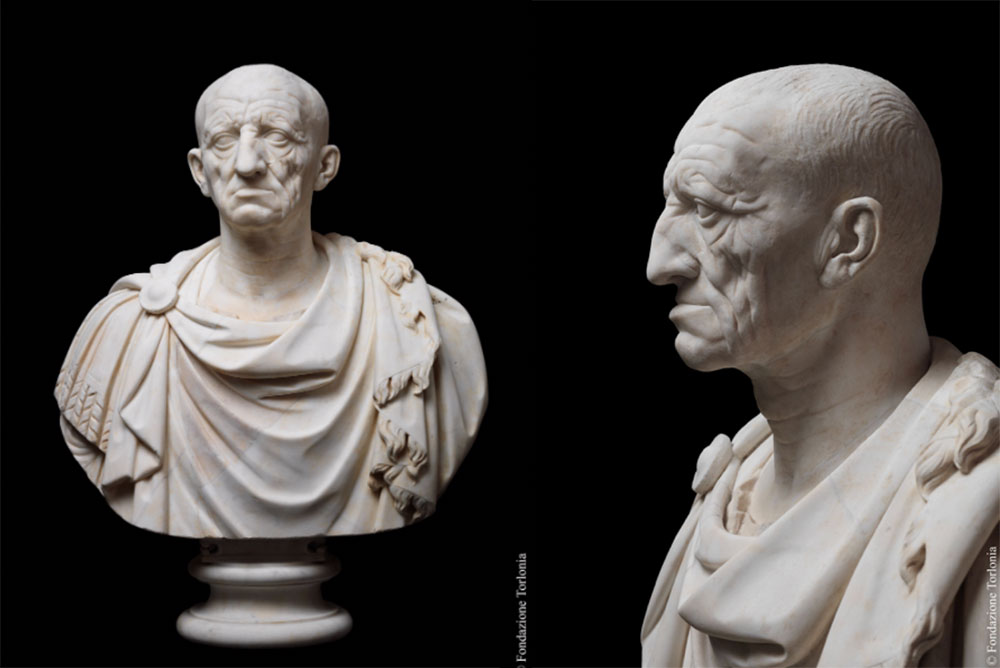
This rather severe statue–an ancient head atop a modern bust–is thought to be of the Servius Sulpicius Galba, emperor of Rome for less than a year. The realism of the face–the deep wrinkles, the furrowed brow–make vivid a man who has been dead since 69 AD. Being emperor had its downsides: Galba was assassinated in January 69 AD by Otho, who then became the next emperor of Rome. / © Fondazione Torlonia.
The Cardinal, nephew of Pope Clement XI, was more than an aesthete. He was a collector, in fact the most voracious collector of classical art in history, according to Clive Cookson, writing in the Financial Times of London. The cardinal sold off his first collection of Roman treasures in 1728 only to start collecting again. He sold his second collection to Pope Clement XII, who made it the basis for Rome’s Capitoline Museums. When Albani died in 1779, it was his third classical collection that he left behind.
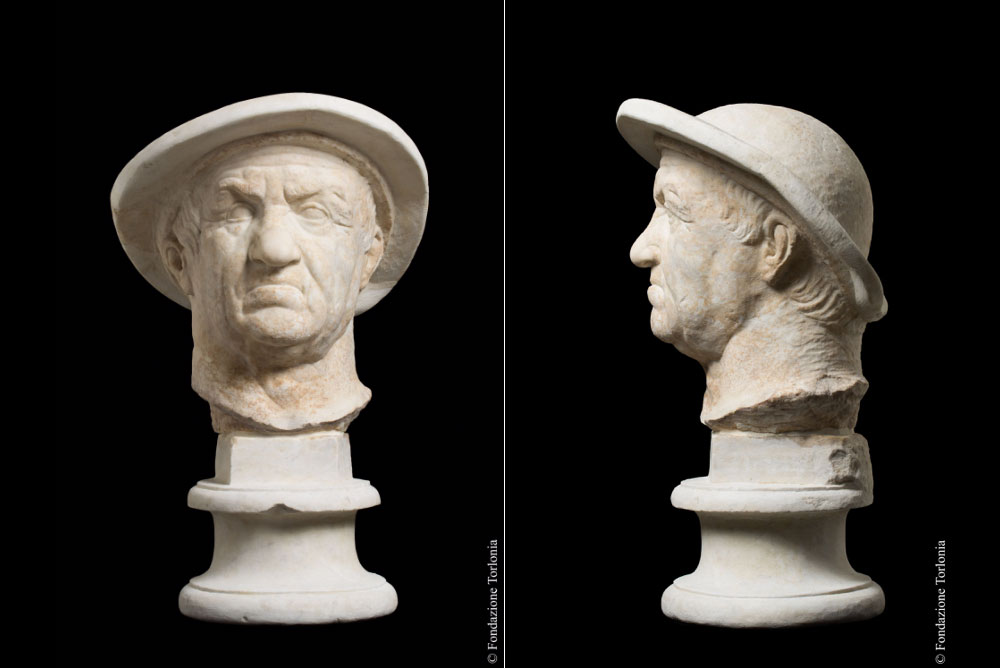
The rustic headgear worn by this man led him to be considered someone of lowborn extraction. By another interpretation, also based on the headpiece, the figure has been identified with Eutidemos I, a Hellenistic dynast who reigned over Battriana, a land once part of Alexander the Great’s empire. / © Fondazione Torlonia.
©
—
It was in the 19th century that the Torlonia family of bankers came on the scene, purchasing the Albani villa and its hoard in 1866. The family kept collecting and underwriting excavations and formed a private museum for the statuary, allowing scholars and notables to visit on a limited basis. Eventually, a few years before his death in 2017, Prince Alessandro Torlonia created a foundation dedicated to preserving the villa and its collection.
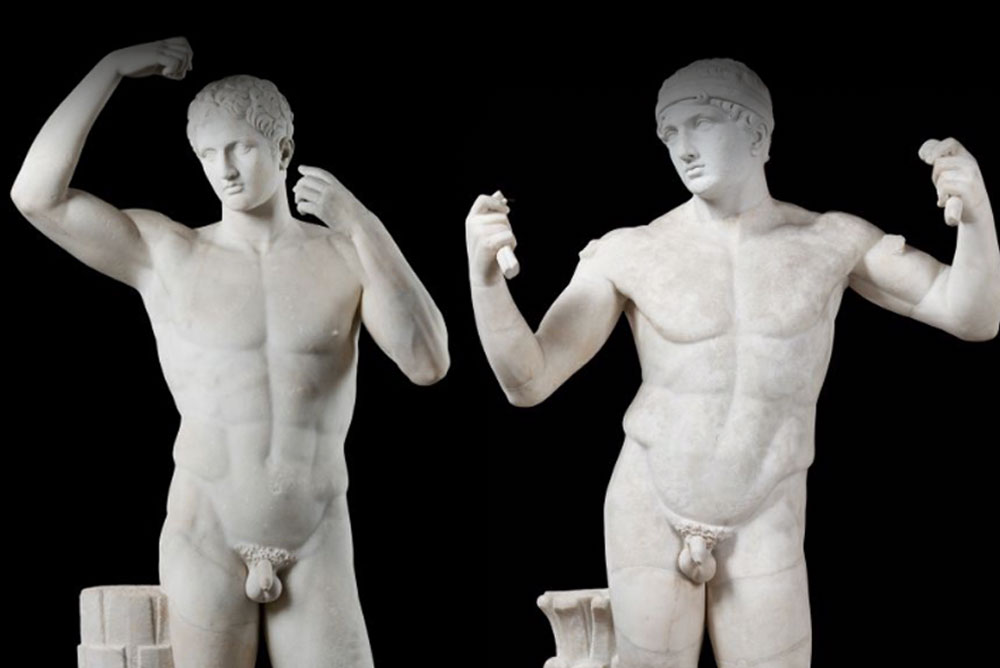
These “virile statues” exemplify the Greek celebration of the perfect human form. The figure on the right is an athlete who wears a tainia, a headband of victory. The statue is a Roman copy of a Greek original by the sculptor Polyclitus. / © Fondazione Torlonia.
In recent times, the Torlonia family has been opening its doors more generally, with visits accorded upon request. And since last week, more than 90 works from the 620 catalogued marbles in the Torlonia collection have been on view at the new exhibition space at the Capitoline Museums at Villa Caffarelli.
The Torlonia Marbles will be there through June 29, 2021; by then a visit to Italy may be a possibility for Americans.
One art historian who recently had his first opportunity to see some of the Torlonia Marbles explained that because the works had been in private hands for some 200 years, he knew them only as photographs. The Torlonia Foundation website offers only photographs as well, of course, but delving into it supplies the history and the stories behind the marbles, including videos of restoration.
—Nancy McKeon
The Torlonia Marbles: Collecting Masterpieces. Capitoline Museums at Villa Caffarelli, via di Villa Caffarelli, Rome. Tickets must be booked in advance, € 13 for adults (plus a € 1 advance booking fee). Combination tickets that include the Capitoline Museums are also available.
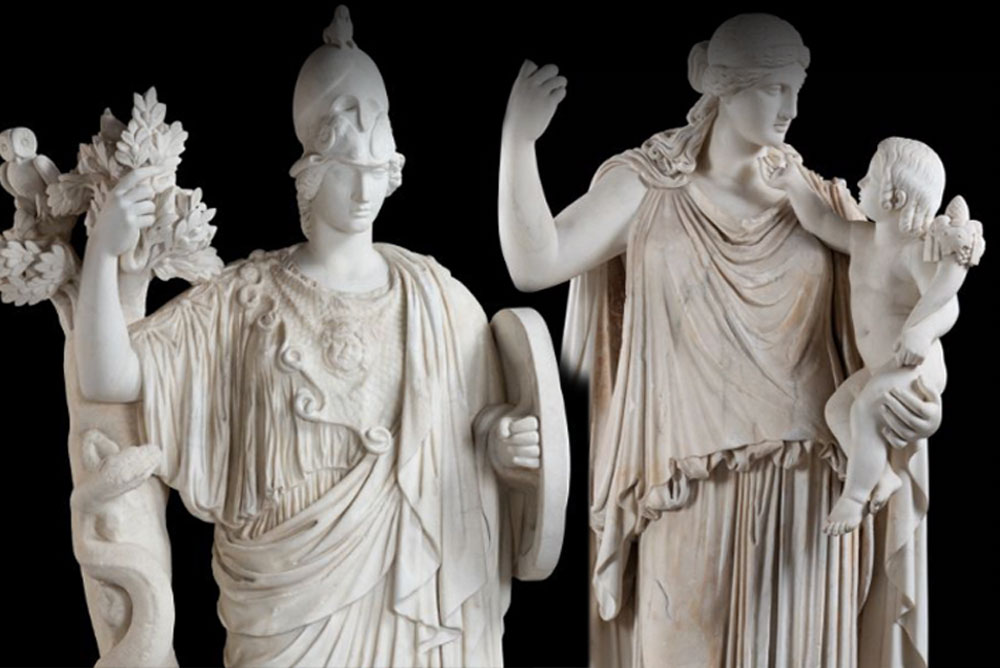
The Torlonia Marbles, on view through June 2021, include many monumental figures. On the left is a depiction of Athena, goddess of war. On the right is Eirene, symbolic of the peace that Athens was proud to maintain after the defeat of Sparta, linking peace with prosperity. / © Fondazione Torlonia.
